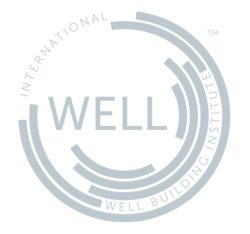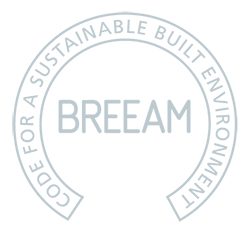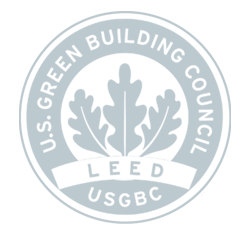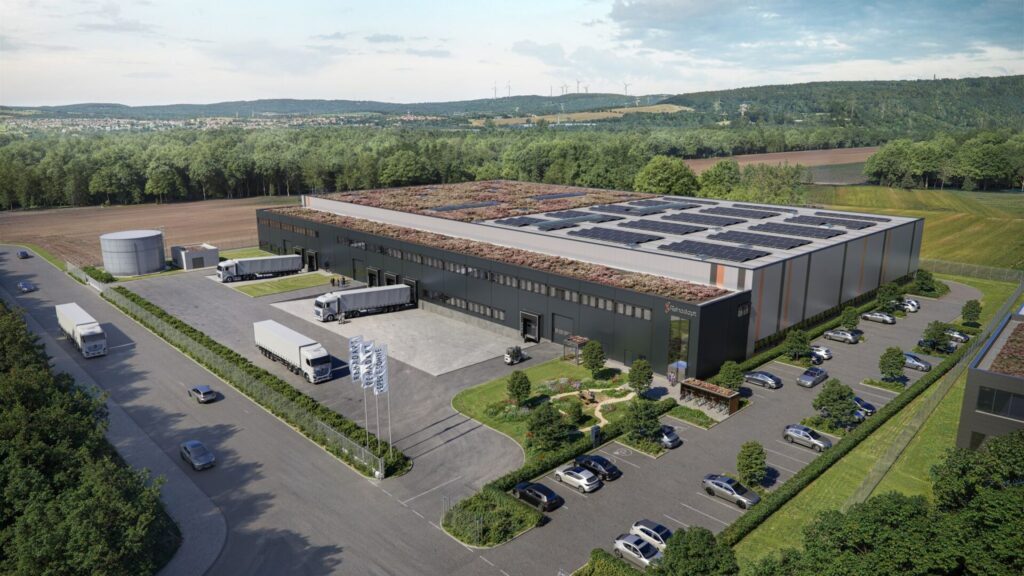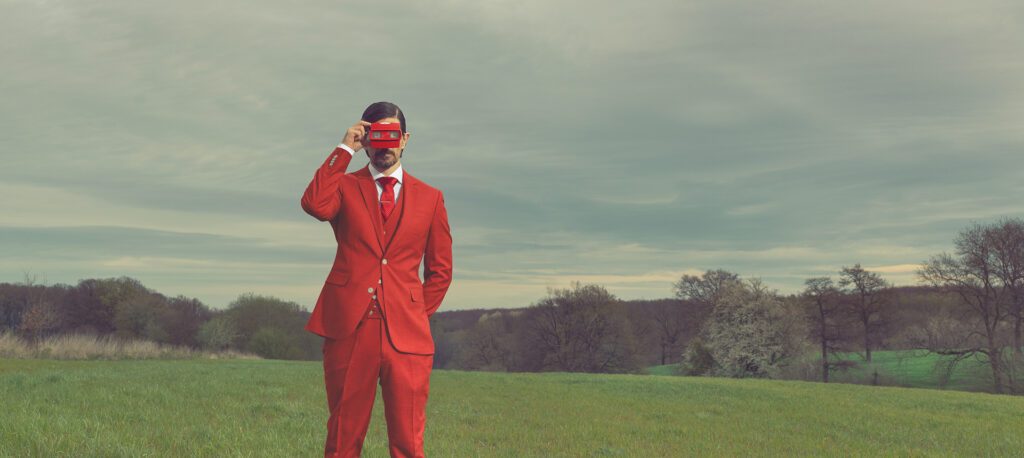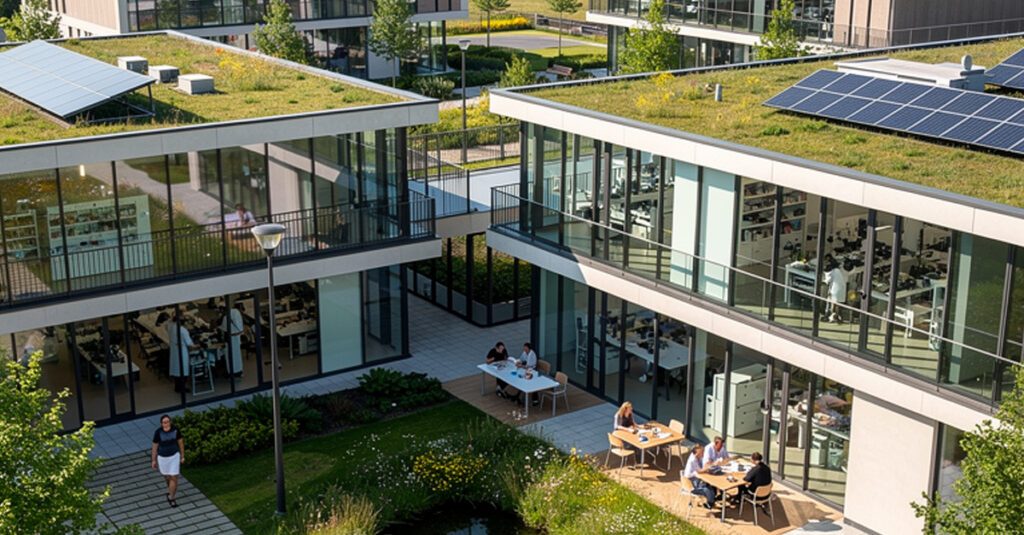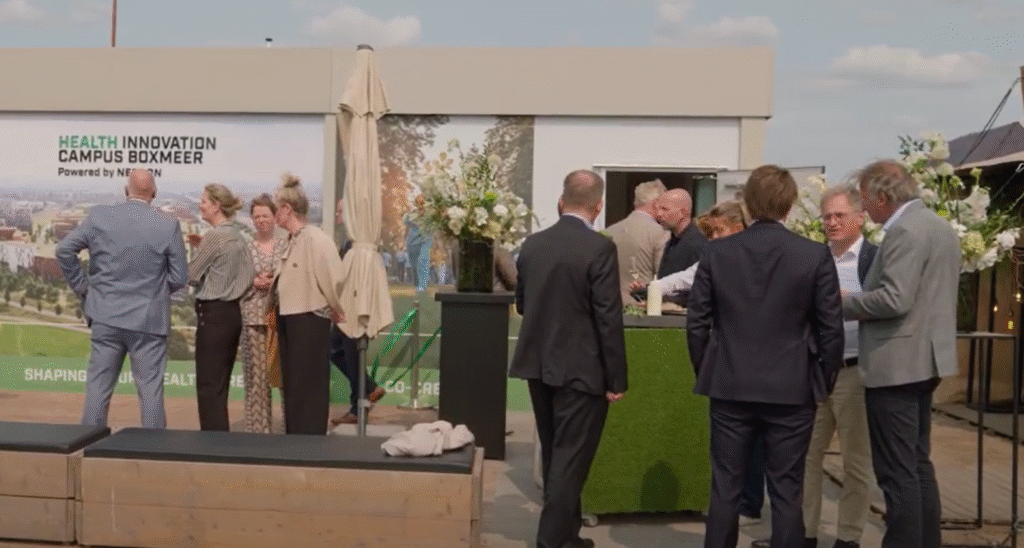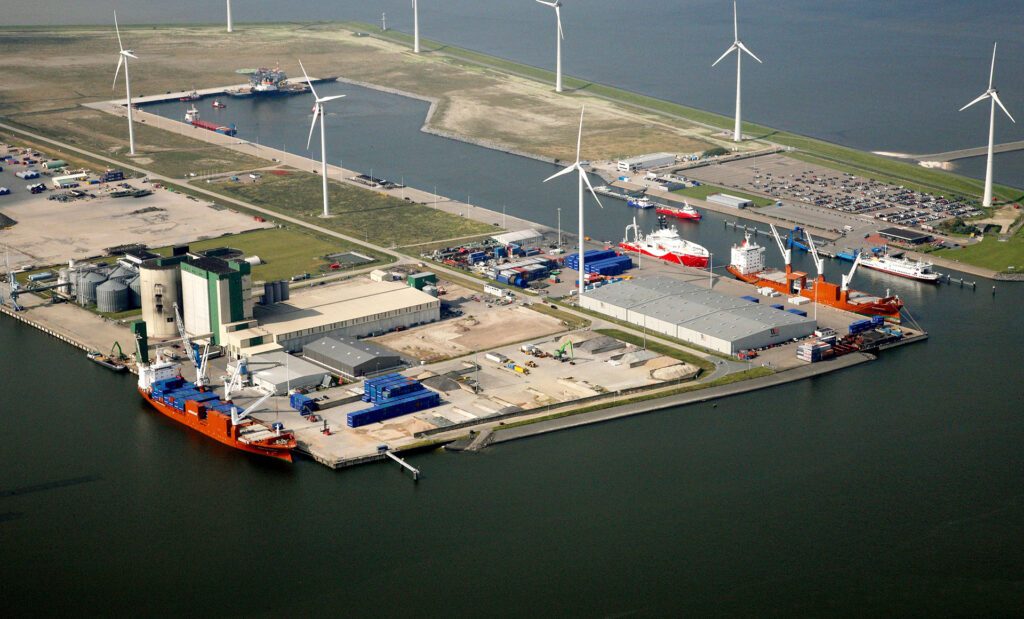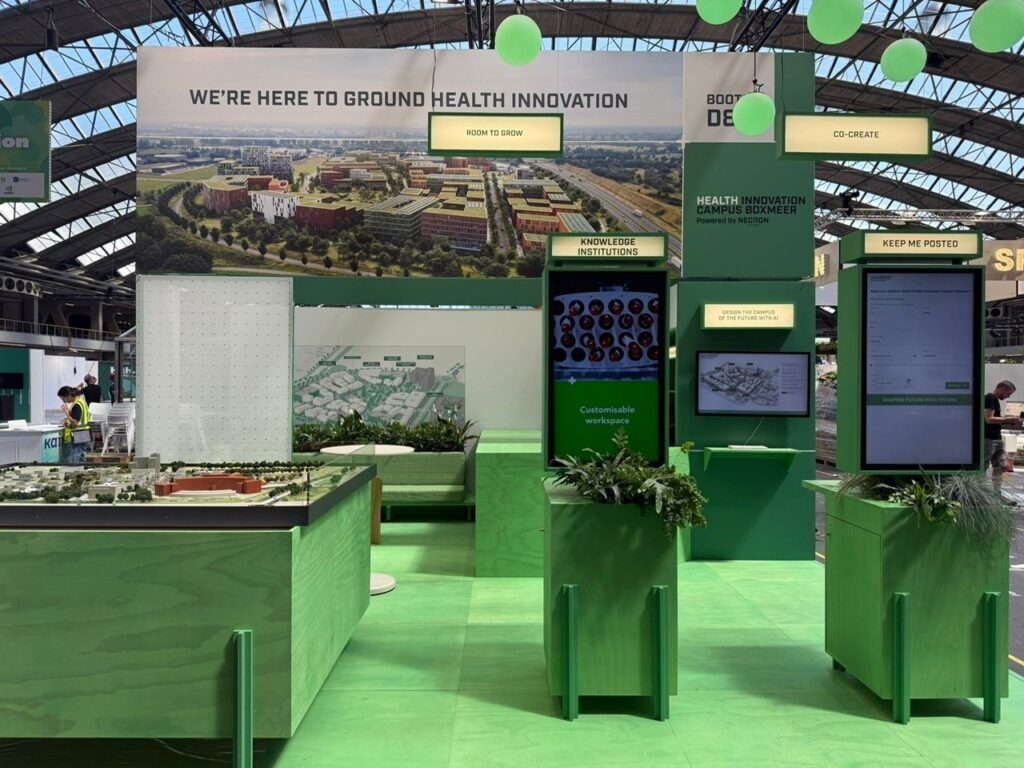Building sustainably: from ambition to action
The Dutch construction sector stands at a turning point. Where previously fine words about responsible materials and techniques were sufficient to convince tenants and investors, demonstrable results are expected nowadays. Sustainability is no longer optional… it’s a requirement.
Constructing sustainably creates value for all stakeholders: tenants, investors, the neighbourhood, and society. The question is no longer whether, but how quickly real estate businesses embrace this transition. Curious about the possibilities? This article provides insight into translating sustainable ambitions into measurable results.
Key takeaways:
- Certified construction as a must-have
- Transparent impact with concrete KPIs
- Technological innovations that shape the future
- Expanding knowledge through strategic partnerships
- Sustainable projects as vital business cases
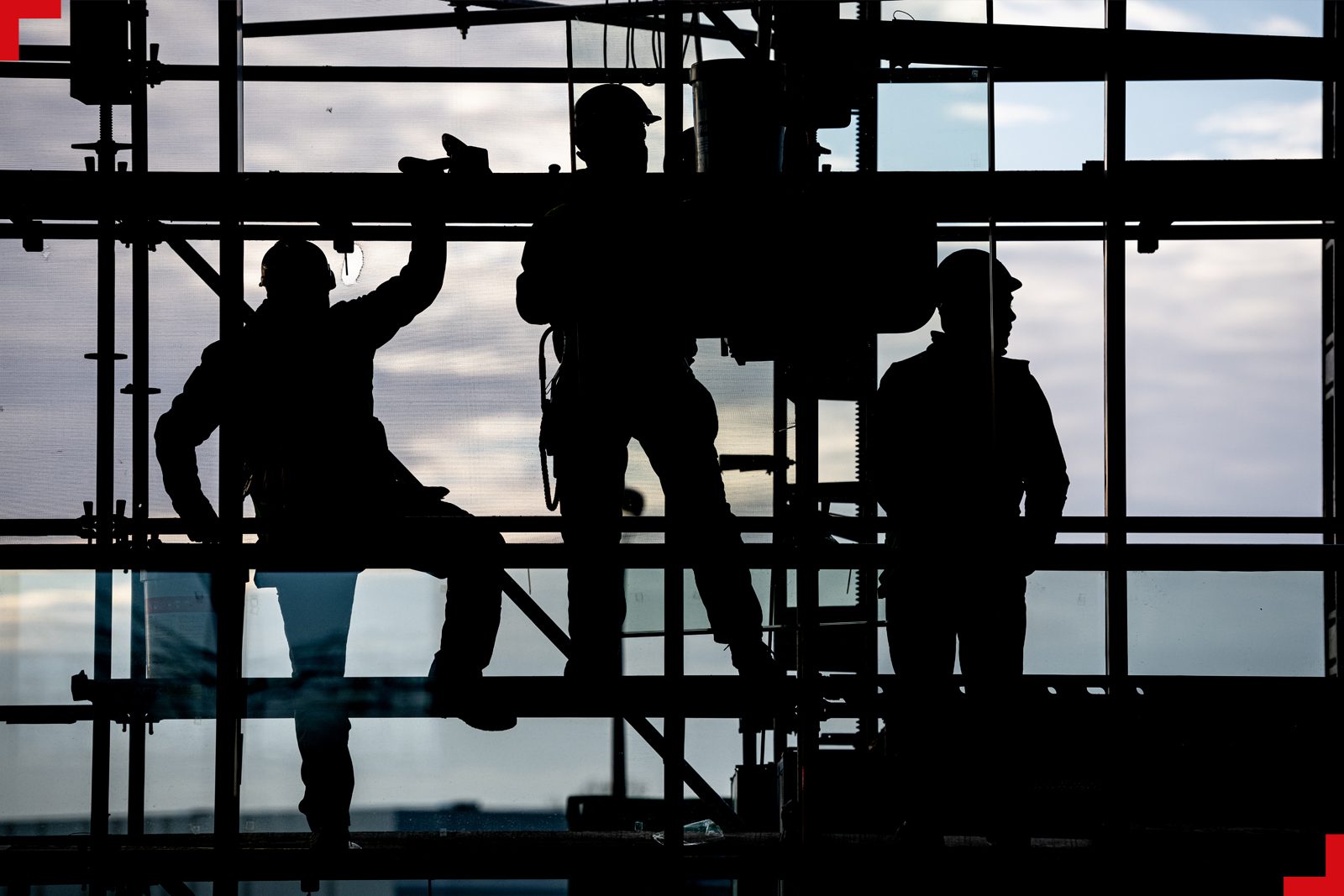
1. Sustainability from ‘Nice-to-Have’ to ‘Must-Have’
The time when sustainability was considered a luxury is behind us. Selling or letting a building without regard for its impact on people and the environment? That’s becoming increasingly difficult. And not only because of government and user requirements: the reward for property developers is simply higher when building for the long term.
Simon Hogenstijn has been consulting property developers on sustainability for over ten years. He explains: “Whoever still thinks in old patterns is lagging behind the facts. Regulation becomes stricter, customers have higher expectations, and investors impose more conditions. You’re better off putting up a truly sustainable building straight away than adapting it every ten years.”
Apart from the intrinsic motivation to make the world a better place, there are three forces contributing to the shift in sustainable construction: regulation, market dynamics, and economics. We’ll dive deeper into these below.
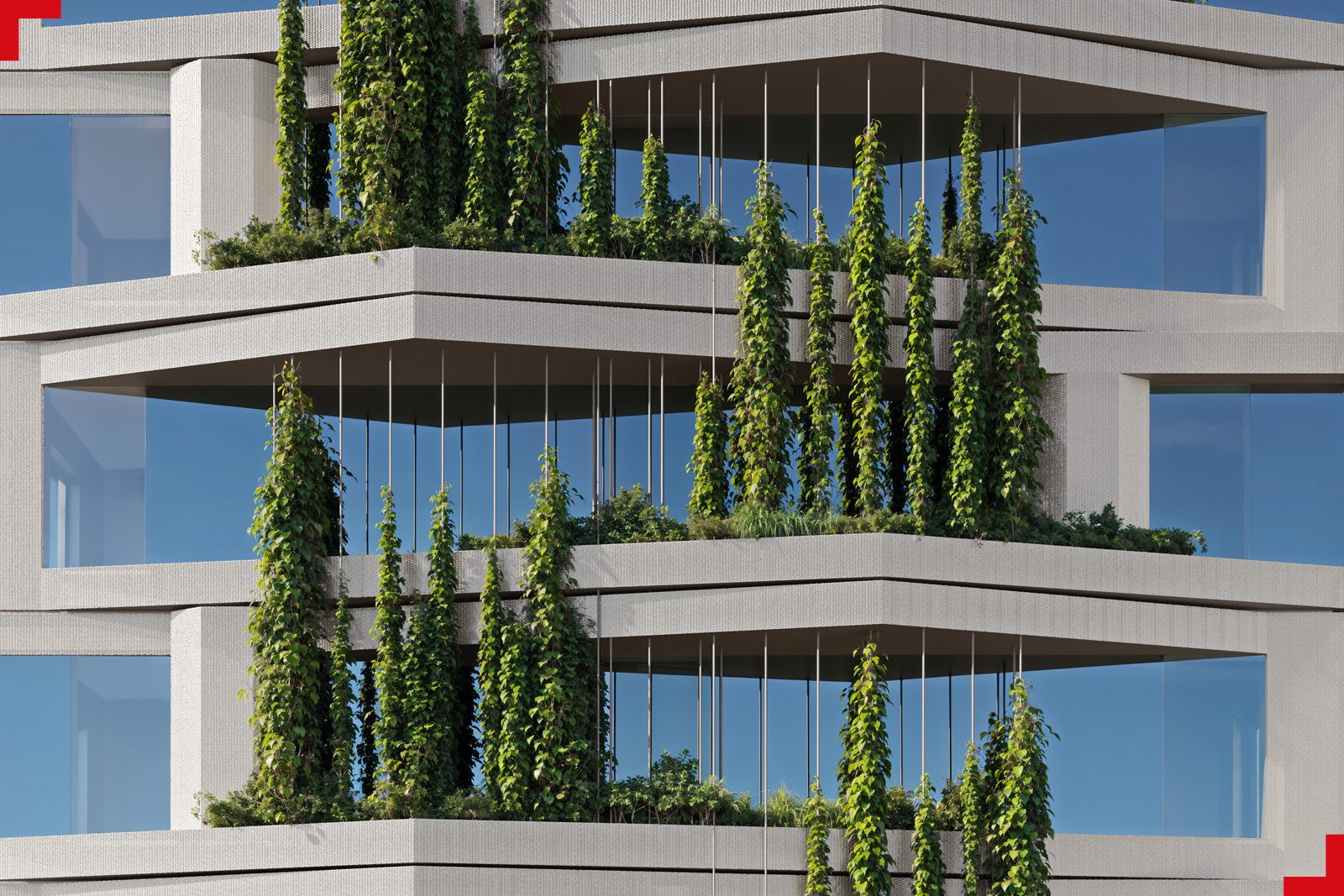
Living facades of the Marriot Hotel @ the Health Innovation Campus Boxmeer
1.1 Regulation as a game changer
The Corporate Sustainability Reporting Directive (CSRD) requires companies to report on their impact on people and the environment. This means property developers must make their sustainability performance transparent.
All large enterprises reporting under the CSRD must also do so in accordance with the EU Taxonomy. This European regulation creates a uniform standard for what is truly ‘green’. For projects that don’t meet these criteria, finding financing is becoming increasingly difficult.
Also local authorities contribute to the acceleration of sustainable building and the energy transition. Municipalities and other regional governments increasingly link building permits to their own sustainability goals, with demands that often go beyond statutory requirements. The trend towards ecological responsibility is therefore driven at various levels.
1.2 Market dynamics and client expectations
Integrating sustainability into the accommodation strategy is becoming the standard for commercial tenants. Multinationals such as Ahold, Unilever, ING, and ASML demand a high BREEAM and LEED certification for their offices. These companies report on their scope 3 emissions, of which office buildings form a significant component. Rental contracts, therefore, increasingly contain sustainability clauses with, among others, concrete energy performance requirements.
Institutional investors are redefining their investment criteria around ESG performance. Dutch pension funds ABP and PMT have announced that every property investment from 2025 must contribute to their net-zero ambitions. This means commercial property without a sustainability certification is excluded from their acquisition portfolios or valued with a significant risk premium.
Dutch councils and provinces use sustainability as a selection criterion for land allocation. Tenders for commercial development locations increasingly feature award criteria where sustainability performance determines up to 50% of the score. Amsterdam and Rotterdam, among other cities, explicitly require circular construction plans and energy-neutral designs for new business parks and office locations.
1.3 Economic drivers behind the shift
Rising energy prices make the business case for sustainable structures stronger every year. An average new-build project with an energy label ‘A’ profits from up to 40% lower energy costs than a comparable existing building. Thanks to surging costs for lightning, cooling, and heating, sustainability investments pay for themselves within 10 years.
Sustainable materials are becoming mainstream commodities. What was previously considered niche is now produced on an industrial scale. Timber construction, recycled materials, and bio-based insulation are reaching cost parity with traditional alternatives.
Green financing accelerates new building developments. Banks offer ‘sustainability-linked loans’ with interest discounts for projects that achieve sustainability targets. The European Investment Bank provides billions in favourable financing for green property projects through the InvestEU programme.
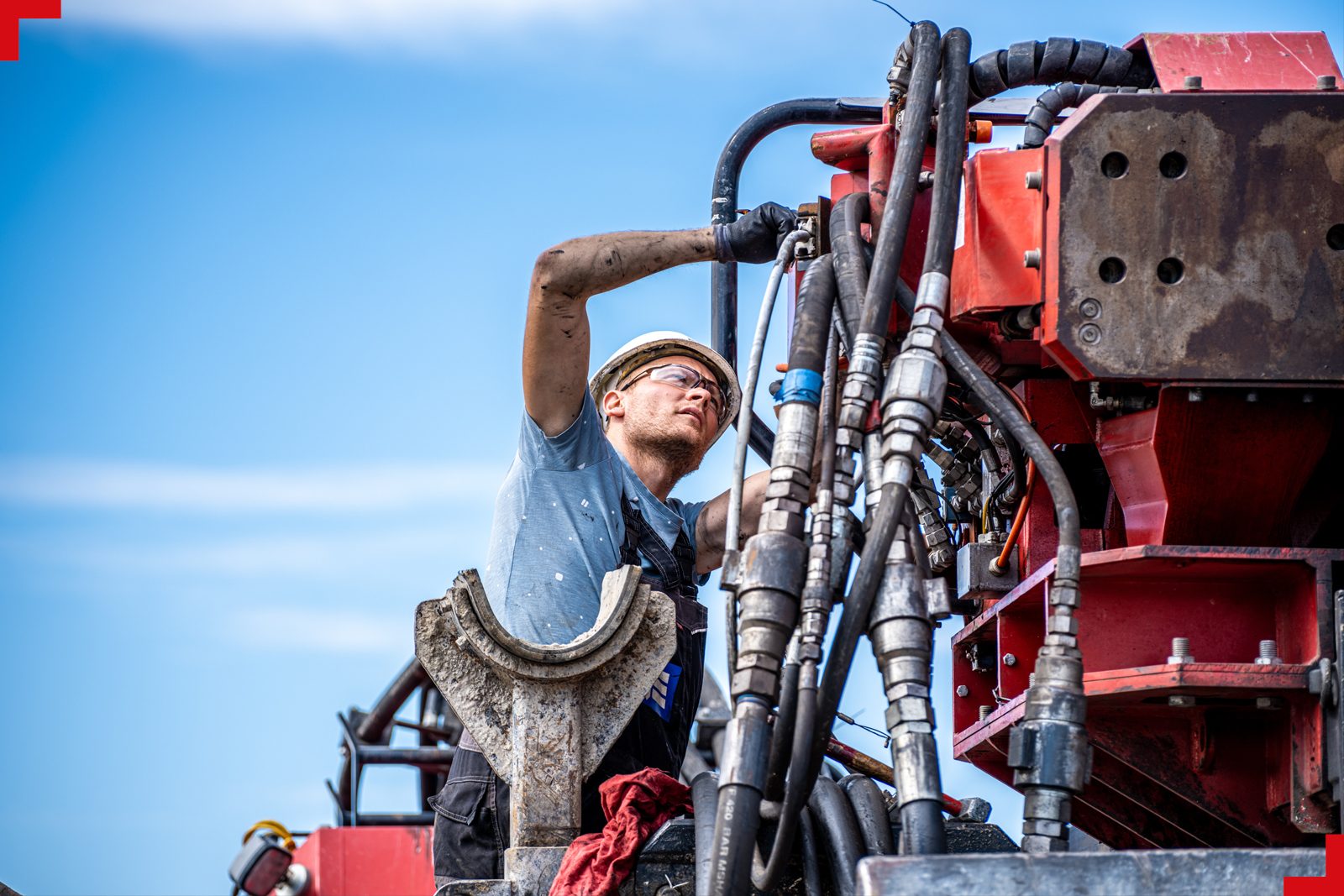
2. Measurable impact: from paper promises to concrete results
The era of vague ambitions is long gone. Investors, tenants, and authorities demand hard data to prove what’s achieved. They want to know how much energy their building consumes, what the CO2 impact is, and what percentage of materials is genuinely circular. Transparency is rapidly becoming the new standard in communication.
Simon Hogenstijn is a sustainable construction adviser at Building Revolution. He acknowledges the added value of certification, but is simultaneously wary of greenwashing. “GPR Building is a Dutch instrument for improving the sustainability of buildings. In my view, however, it adds limited value because it lacks a clear quality protocol.
The ‘energielabel’ is the most well-known tool in the Netherlands to rate the energy efficiency of buildings. But it doesn’t tell the whole story about sustainability. For instance, you can score highly because of solar panels without proper insulation. That’s fighting a losing battle. We advise looking at total energy consumption. So how it’s generated AND how efficiently it’s used. BREEAM is, in my view, the most reliable certificate for this. A big advantage of BREEAM is that it checks installations not only in design but also during construction.”
2.1 Certification and validation
BREEAM stands for Building Research Establishment Environmental Assessment Method. This is the world’s most widely applied sustainability standard for buildings. It has been applied in the Netherlands since 2009 under the name BREEAM-NL, with the Dutch Green Building Council (DGBC) as the national accelerator organisation. The system assesses projects within nine categories: energy, water, materials, waste, health, transport, ecology, management, and innovation.
A new project receives a BREEAM score based on the percentage of sustainability criteria it meets. That result can be PASS (≥ 30%), GOOD (≥ 45%), VERY GOOD (≥ 55%), EXCELLENT (≥ 70%), or OUTSTANDING (≥ 85%). Over 60,000 projects worldwide, including 4,000 in the Netherlands, have achieved a BREEAM certification.
WELL is an internationally recognised standard focusing on health, wellbeing, and comfort. The goal is to create a better living environment for daily users of a building. These could be residents in an apartment complex, employees in a distribution centre, or guests in a restaurant. Companies that operate in a building with a high WELL certification generally benefit from higher productivity and less sick leave.
WELL tests buildings on eleven criteria: air, water, nourishment, light, movement, thermal comfort, sound, materials, mind, community, and innovation. For example, adequate ventilation, daylight, and quietness are important for a healthy environment. Each aspect contributes to the final score of Bronze (≥ 40 points), Silver (≥ 50 points), Gold (≥ 60 points), or Platinum (≥ 80 points).
LEED (Leadership in Energy and Environmental Design) is an American system used in the Netherlands by mostly international developers and investors. It gives multinationals a powerful tool to assess the performance of all their property spread across the world. By mid-2025, there were 139 LEED-certified Dutch buildings, of which 14% Silver, 61% Gold, and 15% Platinum.
LEED focuses particularly on energy performance and the associated environmental impact of a building. High certification is therefore not only good for sustainability, but also for keeping daily use affordable. On average, LEED Gold (≥ 60 points) and LEED Platinum (≥ 80 points) projects profit from 25-30% lower operational costs.
2.2 KPIs that matter in practice
Performance indicators for non-residential buildings go beyond basic energy labels. As of 2021, offices, warehouses, and other commercial buildings must comply with stricter BENG regulations. As an example, offices can primarily consume a maximum of 50 kWh per square metre per year. Top-class facilities must limit their yearly needs to 25 kWh/m² to be eligible for BREEAM Outstanding and LEED Platinum certification.
CO2 emissions over the entire building lifecycle become decisive for institutional investors. Large pension funds such as APG and PFZW apply strict CO2 budgets for their property portfolios. Commercial projects must demonstrate they contribute to net-zero targets for 2050, meaning embodied carbon from materials becomes equally important as operational energy.
Circular performance indicators, such as the Material Circularity Indicator (MCI), are becoming increasingly important for ESG financing. This specific indicator measures the percentage of renewable and reusable raw materials used in a building. Based on that internationally recognised materials passport, projects with a high level of circularity receive priority for green bonds and sustainability-linked loans.
2.3 Transparency and reporting to stakeholders
Real-time monitoring via IoT sensors becomes the new standard. Smart metres and sensors continuously measure variables like energy consumption, air quality, noise, temperature, and humidity. Dashboards translate this data into useful insights, so tenants and managers can monitor the actual performance of the building.
Blockchain technology enables material passports. Each material used receives a digital identity with information about origin, composition, and destination. This increases transparency in the chain and enables the use of circular business models.
Third-party verification becomes mandatory for sustainability claims. Independent certification bodies, such as BRE for BREEAM and USGBC for LEED, check whether projects perform as promised. This prevents fraud and ‘greenwashing’, while increasing confidence from investors and end users.
3. Innovation and technology as drivers of sustainable development
Technology is changing the way we build. What was innovative yesterday is mainstream today. Timber construction now reaches 20 storeys. Sensors predict when maintenance is needed. Buildings produce more energy than they consume. The question is no longer whether these techniques work, but how quickly you can implement them.
According to sustainable building advisor Simon Hogenstijn, the Netherlands is reasonably ahead internationally. “Labour market scarcity accelerates the trend towards better buildings here. Workplace quality simply helps attract more and better personnel. I see promising initiatives with summer night ventilation, where buildings are cooled overnight with free cold outside air.
But not everything is going well yet. The acoustic standard is at 80 decibels still far too high. That’s like a lorry passing at 40 mph five metres away. For offices, the standard is stricter at 45 dB, but 35-40 dB is desirable for good concentration. I therefore advise developers to anticipate tomorrow’s wishes rather than react to today’s requirements.”
This chapter shows which innovations are ready for wide application today. No science fiction, but proven concepts that have the power to make your project stand out in the market.
3.1 Smart building materials and techniques
Bio-based materials offer unique advantages for large commercial projects. Thanks to organic components, office buildings up to 20 storeys can realise 40% faster construction and 60% lower CO2 footprint. The new Triodos headquarters in Driebergen demonstrates that timber structures are also suitable for high-quality office environments, with excellent acoustic performance.
While the contractor is laying the foundation, specialised machines produce prefab modules for the next construction phase. In the protected environment of a factory, this happens extremely efficiently, minimizing energy and waste. Modular building systems can reduce total construction time by 30-40%, which is beneficial for the overall ecological footprint.
High-end recycled materials nowadays easily meet commercial quality requirements. Recycled steel profiles and concrete components achieve the same strength classes as new materials but with 70% lower embodied carbon. With the guarantee that materials will be taken back after use. Circular building supports corporate tenants’ circular ambitions without quality compromise.
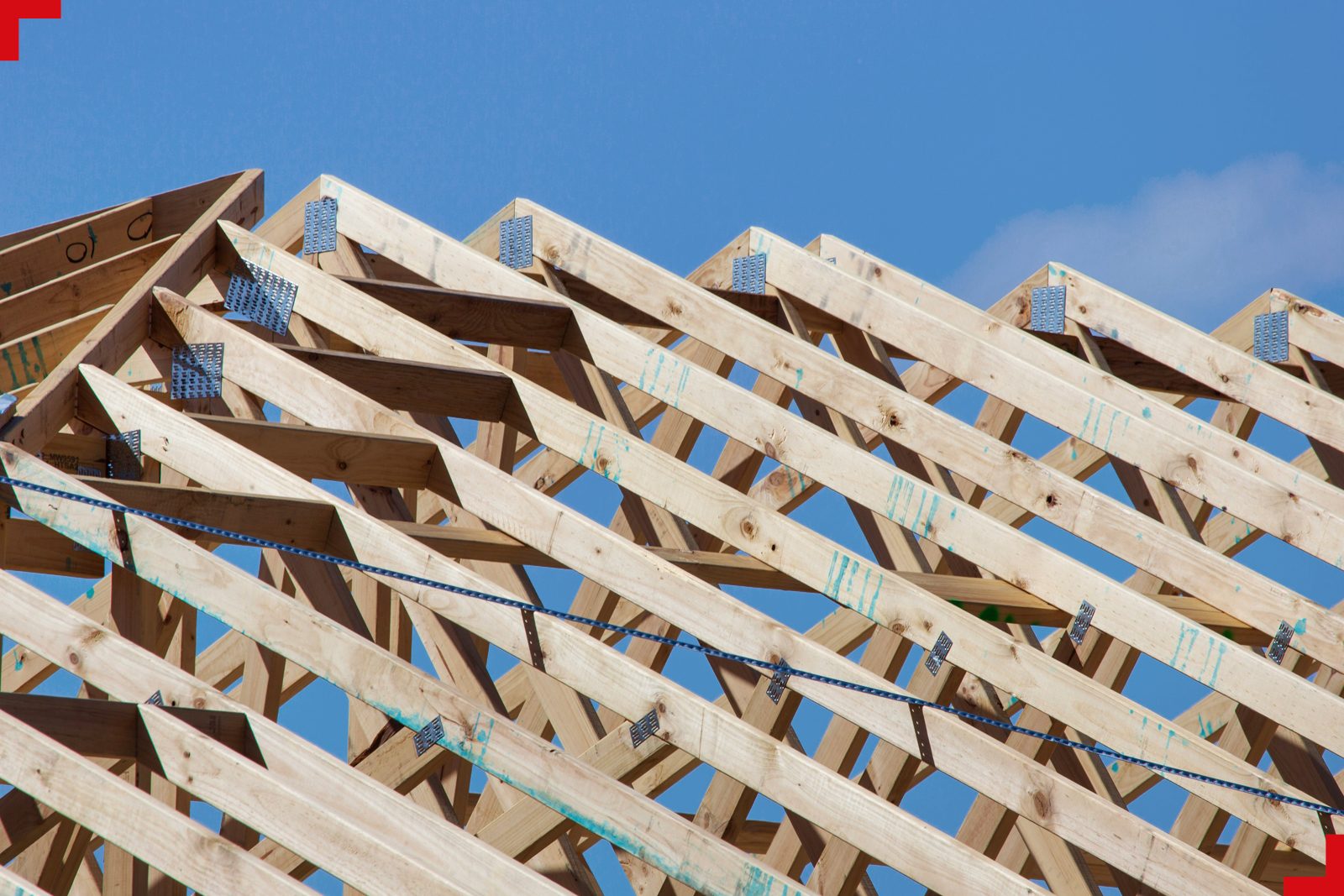
Prefab timber
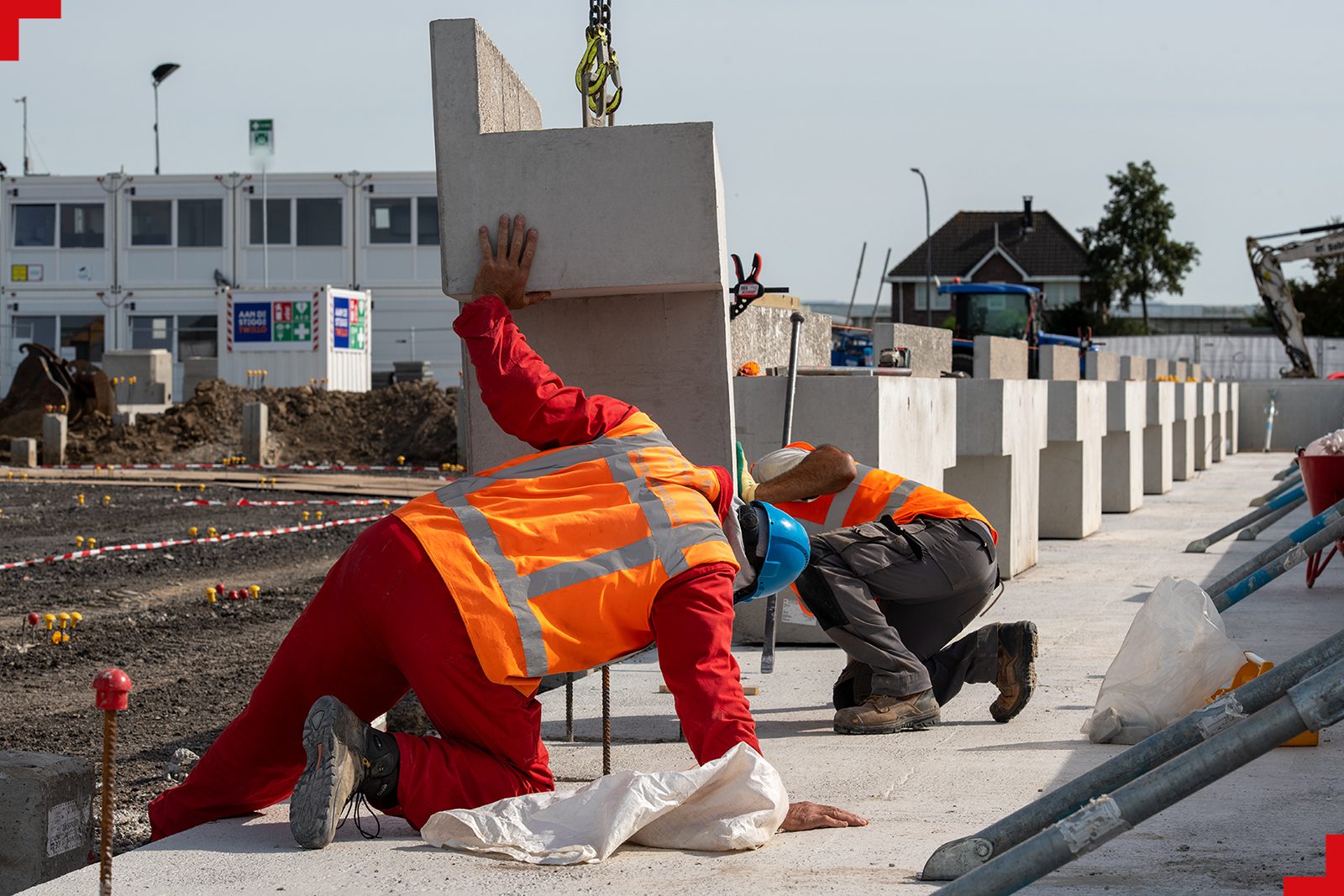
Prefab concrete
3.2 Energy systems of the future
Fully electric concepts eliminate fossil fuels from buildings. By connecting heat pumps with solar panels and industrial batteries, commercial buildings can become energy-neutral or even energy-positive. Collective energy systems reduce costs and increase efficiency. Ground-source heating and cooling (GSHC) systems use the constant temperature of the earth for efficient heating and cooling. Schiphol Airport, for example, saves 100,000 tonnes of CO2 annually with Europe’s largest GSHC system.
Smart grids and energy management cut operational costs for commercial tenants. Office buildings with smart energy systems can sell surplus solar power to the grid during weekends and buy it back during peak hours on working days. Furthermore, it gives tenants insight into actual energy consumption per square metre, for extra transparency in service costs and sustainability performance.
Health Innovation Campus Boxmeer is an example of a planned progressive project with an integral energy solution. The strong focus on sustainability translates into innovative measures such as green roofs, energy-efficient buildings, and climate-adaptive systems. Everything is designed to make the campus economical, environmentally friendly, and climate resilient.
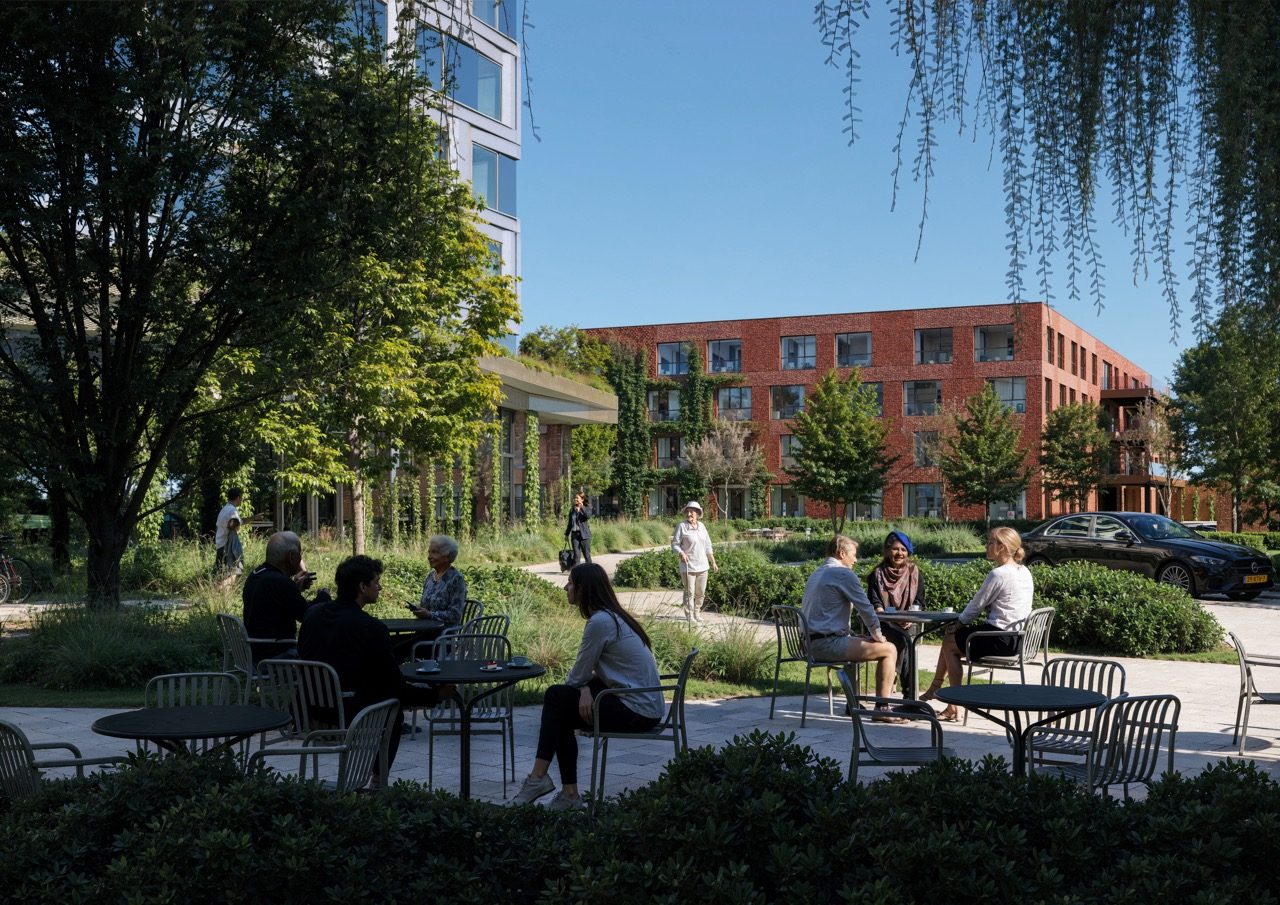
3.3 Digital tools for optimisation
Building Information Modelling (BIM) integrates sustainability into the design process by calculating the CO2 footprint of material choices and energy concepts. This makes it possible to optimise sustainability well before the first spade hits the ground.
Creating a Digital Twin, or a virtual copy of a building, allows you to predict and optimise building performance. Real-time models combine sensor data with algorithms to reduce energy consumption and maintenance costs. Property managers are then able to plan periodic maintenance and know when certain materials become available for reuse. This extends the lifespan of buildings and increases circularity.
4. Collaboration as key to scalable impact
Successful projects arise through smart collaborations. An innovative material supplier opening new possibilities. A council giving space for sustainable experimentation. An investor thinking long term. Together we achieve more than the sum of the parts.
According to Simon Hogenstijn, the secret of a successful project lies in making choices and acting accordingly. “A project team that stays on top of things is crucial. Sure, an external controller costs money but pays for itself many times over in higher construction quality. I always pay close attention to ensuring adequate focus on installations like ventilation, lighting, and cooling. A building construction can be state-of-the-art, but with suboptimal energy management, tenants will be reluctant. Investing in triple glazing seems expensive upfront, but it is worth the extra money.”
This chapter shows how successful developers use their network as a strategic advantage. From chain integration to stakeholder engagement: structural collaboration promotes knowledge sharing, risk distribution, and realising ambitions.
4.1 Chain integration and knowledge partnerships
Strategic alliances with material suppliers accelerate sustainable innovation. Property developers who form early partnerships with innovative suppliers gain access to new materials and techniques before they become mainstream. Large contractors, for example, work with concrete recycling specialists to develop 100% reusable concrete applications.
Long-term contracts with specialised contractors ensure quality assurance and industry-leading knowledge. By working closely with contractors specialised in sustainable construction methods, developers can manageably implement complex techniques. This collaboration reduces implementation risks and accelerates the learning curve.
Research partnerships with knowledge institutes such as TNO, TU Delft, and Wageningen University bring the latest innovations to practice. The Living Lab concept provides space to first test new techniques in small-scale pilot projects before scaling them up to commercial developments.
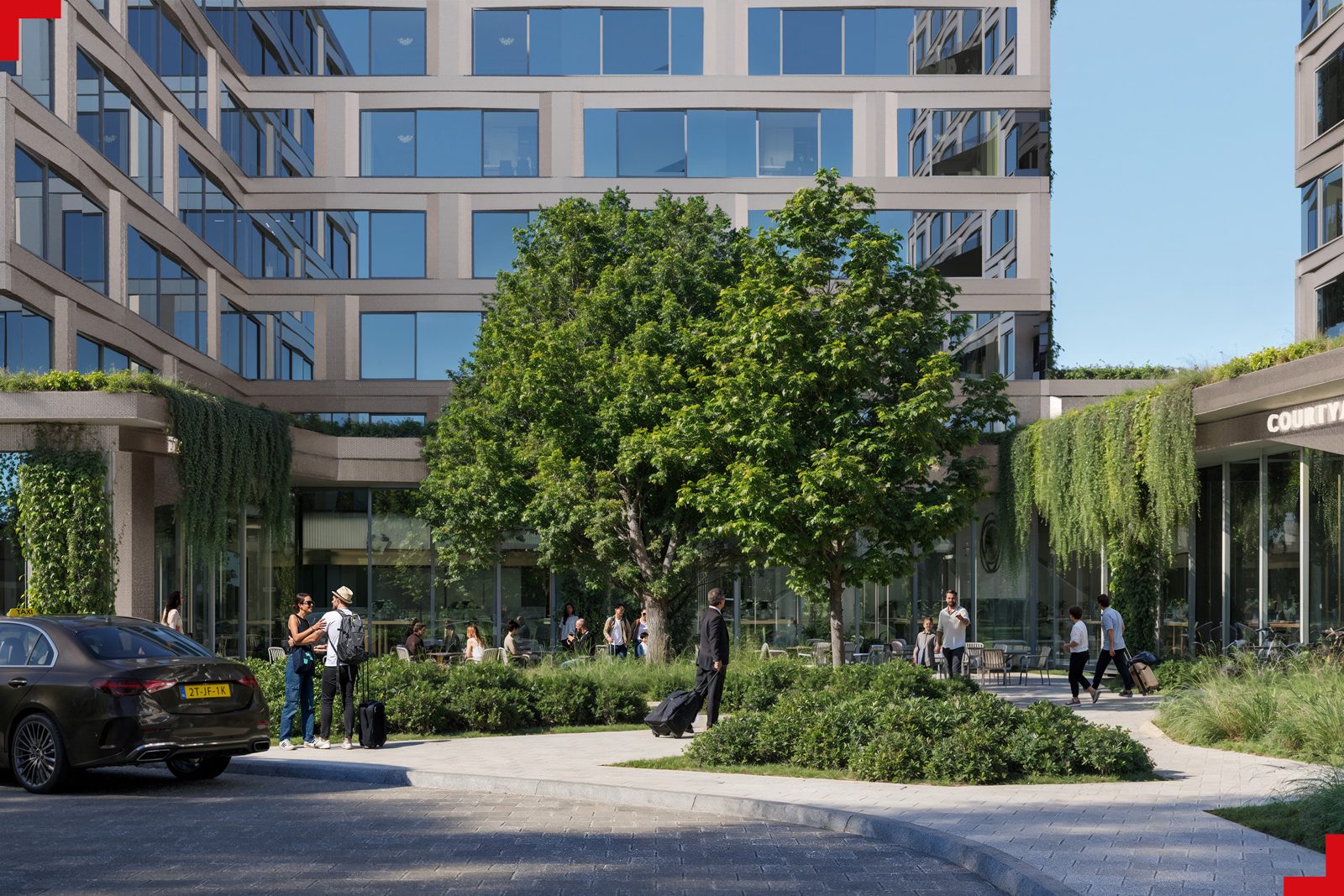
Marriot Hotel Boxmeer courtyard
4.2 Stakeholder engagement and co-creation
By involving tenants in energy concepts and workplace innovations during the design phase, buildings emerge that perfectly align with their operational excellence objectives. End users who contribute ideas about their future smart building system, usually achieve lower usage costs.
City councils position themselves as pioneers in sustainable business parks and office locations. By developing integral area visions together with property developers, coherent ecosystems emerge where companies benefit from shared facilities such as green energy generation and circular waste management. The Brainport Campus in Eindhoven shows how public-private collaboration leads to a world-class, sustainable business location.
Institutional investors function as strategic partners rather than passive capital providers. By involving pension funds and insurers in ESG strategies from as early as the concept stage, development vision and investment objectives start aligning. This collaboration results in stable financing, higher sale prices (because investors accept lower returns for sustainable assets), and spread risks in innovative sustainability concepts such as energy-as-a-service models.
4.3 Knowledge sharing and best practices
Open innovation platforms like the Green Building Council Nederland facilitate knowledge sharing between competitors. By sharing best practices and lessons learned, the entire sector accelerates the sustainability transition. Case study publications and project tours make specialist knowledge accessible to a wider audience. By extensively documenting successful projects and opening them for visits, other developers can learn from proven concepts.
Sectoral knowledge networks such as Bouwend Nederland and NEPROM create collective learning processes. These organisations develop joint standards, certifications, and lobby for supportive policy. Their working groups translate complex regulations into practical guidance for their members.
5. The business case for sustainable construction today and tomorrow
Sustainable buildings achieve higher rental prices, lower operational costs, and faster letting. Moreover, they retain their value whilst conventional buildings depreciate. But the real value lies in the future-proofing of real estate. Regulation becomes stricter. Tenants choose more consciously. Financiers impose harder requirements. Those who invest in sustainability now avoid costly renovations or value loss later.
Simon Hogenstijn sees an important role for tenants. “I think the end user should make higher demands for the building they end up using. They easily earn back the premium rent through lower operating costs, they’ll reduce their CO2 emissions, and a healthy environment has a positive effect on employees. If I were a developer, I would therefore go quite a step further than the current legal obligation. In a few years, it will be virtually impossible to let a property without BREEAM certification.”
5.1 Short-term financial benefits
Lower service costs strengthen the competitive position when letting office and commercial space. Sustainable office buildings with lower energy consumption offer property developers a strong letting argument when tenants have to choose between comparable locations.
Premium rent and shorter vacancy periods directly generate higher returns. According to studies from CBRE and Edmond Shipway, BREEAM Excellent and LEED Gold office buildings generally achieve 5–15% higher rental prices. For an office building of 5,000 m², the extra rental income can amount to €300,000 per year.
Green financing lowers capital costs and increases leverage possibilities. Institutional investors such as pension funds and insurers often accept lower interest rates for property with sustainability certification. Banks are known to provide sustainability-linked loans with interest discounts for projects that achieve ESG objectives.
5.2 Long-term value creation and risk management
Future-proof assets retain their value much better than conventional buildings. The phenomenon of value depreciation of non-sustainable buildings is known as ‘brown discount’, resulting in lower rental income, longer vacancy, and higher operating costs.
Regulatory risks can be reduced by staying ahead of future requirements. The EU Green Deal and the Dutch Climate Agreement announce stricter rules for existing buildings. Developers who already apply high sustainability standards will no longer need to expensively renovate their property later or sell or rent at a lower price.
In addition, brand strengthening associated with sustainability creates an interesting competitive advantage. Property developers who consistently realise sustainable projects are more likely to be considered reliable partners by end users, councils, and investors.
5.3 Societal impact as a competitive advantage
Contributing to Dutch climate goals positions real estate developers as socially responsible entrepreneurs. The Netherlands must achieve a 49% CO2 reduction by 2030 compared to 1990. The built environment is responsible for 40% of all CO2 emissions, making sustainable property development essential for achieving these goals.
Social impact through healthier living environments increases societal acceptance of new developments. Sustainable buildings achieve better living and working conditions, resulting in higher user satisfaction. When communicated right, this can lead to less resistance from residents during building licence procedures.
Economic impact through employment in the green construction sector strengthens the local economy. Every million euros invested in sustainable construction generates 6-8 full-time jobs, 70% of which are filled locally. This is especially valued by councils stimulating economic development through their land policy and permit granting.
6. Conclusion
The Dutch property sector finds itself in an irreversible transformation. Sustainability has evolved from an optional addition to a commercial prerequisite. Sustainable buildings not only achieve higher rental prices and shorter vacancy periods, but are primarily future-proof in a market with increasingly strict regulations and more conscious tenants.
At Necron Group, we believe strategic partnerships, transparent certification, and smart technology implementation are vital for long-term success. This way, everyone – from tenant to developer and from contractor to government – contributes to a better planet. The question is no longer whether the construction sector will become sustainable, but who will take the lead in this promising transition.
Necron Group is committed to sustainable property development with measurable impact for people, planet, and profit. Through innovation, collaboration, and transparency, we’re making sustainable construction the new standard together. More information about our sustainability policy can be found here .
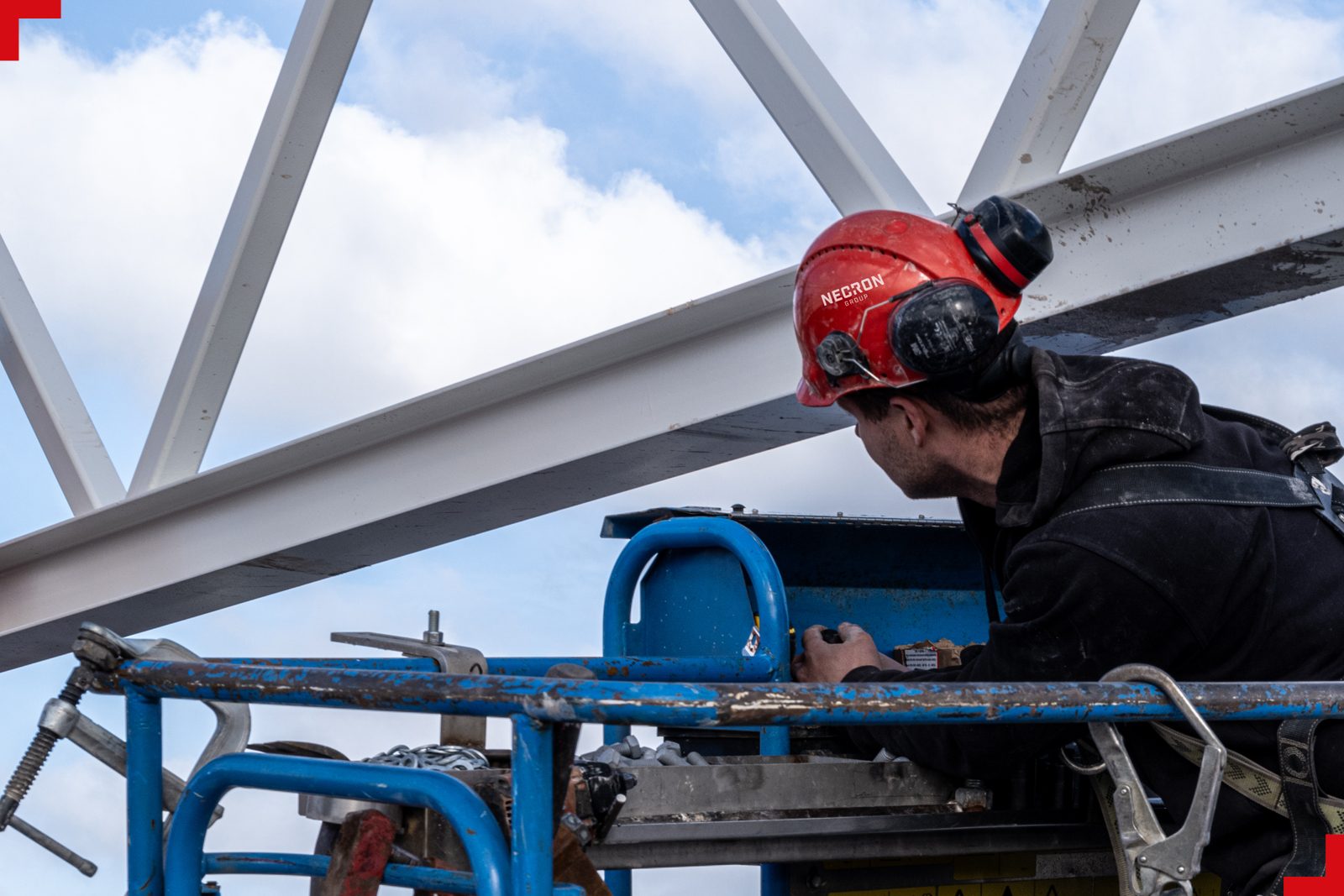
The future of sustainable building is looking bright
